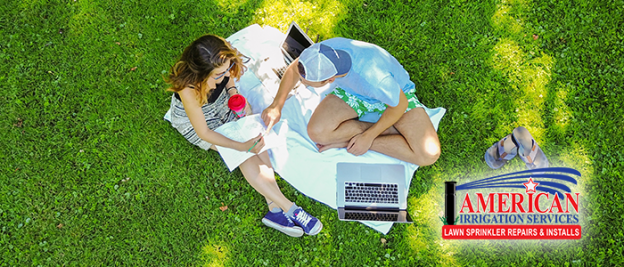Your lawn needs water. Everyone can put that much together themselves, but watering your lawn improperly can lead to various problems down the line. Overwatering can lead to root rot and other diseases; underwatering prevents roots from taking hold, making mowing and harsh weather conditions harder to endure. In this article we explore the concept of mindful watering and how it can help you.
When You Should Water
It is tempting to leave the sprinkler running overnight. This can be satisfying to watch and listen to, but even a well-drained lawn can resemble a swamp after days of this treatment. It certainly is not mindful watering.
This is especially true if your property looks a little gray or dull; that’s when your yard tells you that it needs water. Even walking on your lawn can tell you when water is required genuinely – your blades of grass should spring back up soon after you step on them; a lawn that stays flat is a dehydrated lawn.
Sunrise Salvo
Watering your lawn can seem like a no-brainer, but the grass is a reasonably sensitive plant – As robust as it can seem. Mindful watering encourages you to water your lawn is before 10:00 in the morning. Direct sunlight on wet grass can lead to sun scorching, and water takes to grass when it is slightly more relaxed. There also tends to be less wind in the morning, which allows your lawn to absorb most of the water before it has a chance to evaporate back into the air.
Other Options
If morning watering isn’t an option, try to sneak it in before sundown – Between 4:00 PM and 6:00 PM. If your lawn doesn’t dry before sunset, it may become overly damp as dew forms. This invites disease – so the later you water, the more likely you are to have a sick lawn. Overwatering also invites an opportunity to go over your daily water allotment, which is never suitable for any homeowner.
Don’t Do It
One other piece of advice that seems to fly in the face of your common sense is that your lawn might not need water. A well-established, properly groomed lawn can sometimes survive weeks without water. A brown property often isn’t dead – It’s simply dormant. This is why yards under the snow can appear brown but then return to a crisp green color as the heat, sun, and rain return.
How Much To Water
Most lawns need the top half-foot of soil to be thoroughly moistened – 6 to 8 inches deep. An inch to inch and a half of water is required to get that deep, but you should be careful not to overwater your lawn. There’s often no need to water it if it’s recently rained, for example. Some grasses will prefer this water to be delivered in one watering; others work better with the watering split over two sessions in the week.
You can check your soil with a screwdriver to see how deep the water has moved. When you can quickly push your screwdriver down into the earth, you’ve watered enough. Otherwise, it probably needs a little more. Keep an eye on how long it takes you to be able to push down an entire six inches – That’s how long you should be watering your lawn, if it is within your allotment.
Cool-Season Grasses
Cool-season grasses tend to be more resilient to drought as well, with tall fescue being the most durable cool-season grass. Kentucky bluegrass, finer fescues, and ryegrass may brown and go dormant during a drought but quickly recover once the rain returns.
Warm-Season Grasses
Warm-season grasses such as St. Augustine and centipede grasses tend to require less water, but you should also pay attention to the kind of soil you have. Clay holds water for the longest time, but sandy soil may need more frequent watering. Knowing your lawn will make knowing when and how much to water that much easier.






